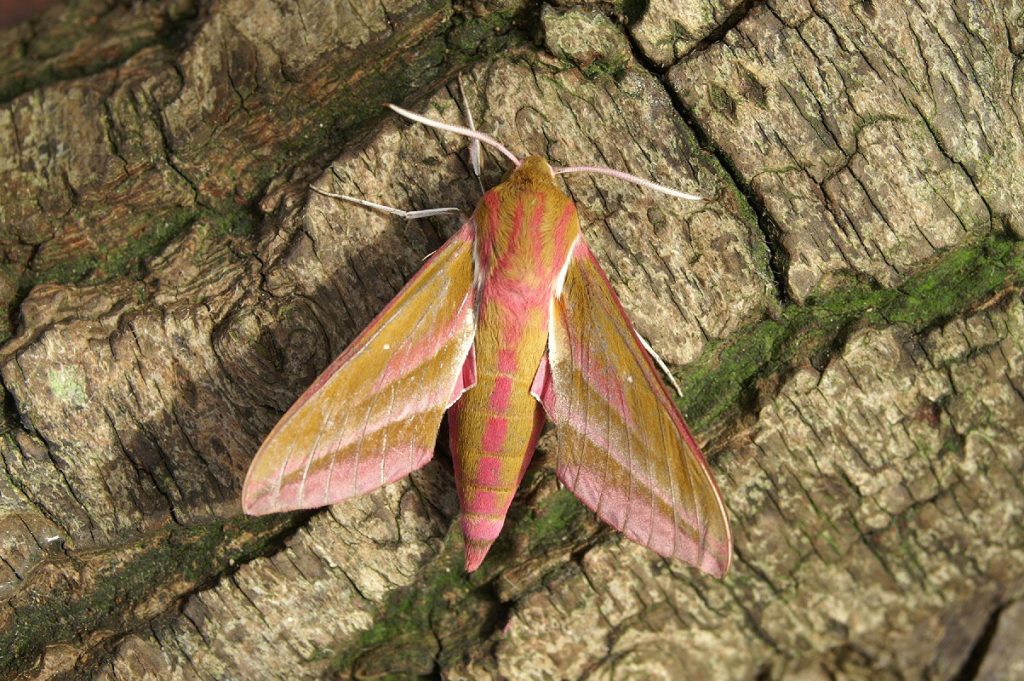Welcome again to the monthly RSPB column, this time about moths.
“Moths?” I hear you cry. “Drab brown things that eat holes in my clothes and bash against the window at night.” Well, not exactly.
Right, let’s start off with them eating your clothes.
Yes, there is a species of moth which can cause holes in your favourite sweater.
It is even called the clothes moth, which is a bit of a clue.
But that is just one species, as opposed to the 3500 or so other species that live in the UK.
That’s a lot of moths, all of whom are far more interested in supping nectar from your garden flowers than they are in your frocks and socks.
OK, but they are all dull brown things, aren’t they? Well true, some are.
Anything that spends most of the daylight hours sleeping needs some form of defence against being eaten by sharp-eyed birds.
Camouflage is the most obvious answer, hence many different variations on brown. But some moths can be pretty spectacular.
Elephant hawkmoths for example are a riot of bright pink and lime green.
Others hide their colours under drab upper wings, but when they fly reveal yellow or crimson underwings.
Not to forget the day-flying moths, who can be just as colourful as the butterflies.
Yes, there are such things as moths which fly during the day; it isn’t just the preserve of butterflies.
So, flying into lights. Yes they do this (and no-one knows why), but it does allow us to get some really good views.
Commercial kits exist to trap moths so they can be examined and then released unharmed.
At our Frampton Marsh reserve we are planning some “moth mornings” to show this to visitors. But you can do the same in your own garden just with a desk lamp and a white sheet. Shining the light at the sheet will bring lots of moths in to rest on the sheet, where you can have a close view of them. Some can even be persuaded to sit on the end of your finger. You couldn’t do that with a butterfly, could you?







